Sign up for The Wild
We’ll help you find the best places to hike, bike and run, as well as the perfect silent spots for meditation and yoga.
You may occasionally receive promotional content from the Los Angeles Times.
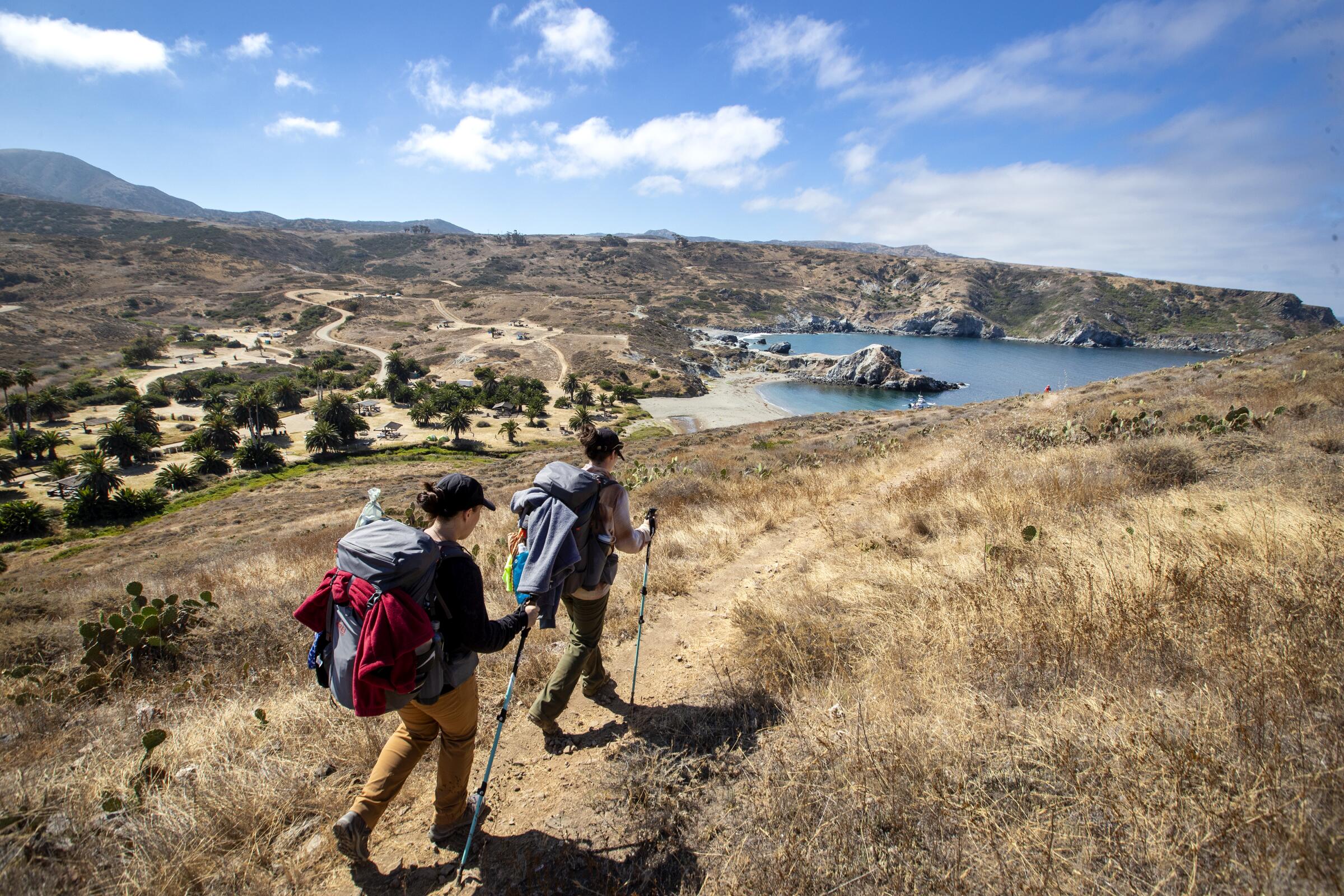
SANTA CATALINA ISLAND — It was the first day of my trip to Santa Catalina, and the island already was working its magic. I didn’t see anyone for miles as I hiked an eastern segment of the Trans-Catalina Trail, which stretches from the town of Avalon to Parsons Landing, a remote beach on the western side of the island.
But that didn’t last.
As I rounded a corner, I came upon two — or was it three? — bison lolling on the hillside. I stopped. The beasts, with huge heads, shaggy beards and sharp little horns, stared at me. I stared back. They looked mellow, but I knew better. I had read warning signs on the island about how quickly they could charge. But my mind, and my body, had stopped. How far away was I supposed to be?
Get The Wild newsletter.
The essential weekly guide to enjoying the outdoors in Southern California. Insider tips on the best of our beaches, trails, parks, deserts, forests and mountains.
You may occasionally receive promotional content from the Los Angeles Times.
Before I could think it through, the voice of God boomed: “Please turn back! Turn back!” I quickly retreated. Turns out God was a tour-bus driver with a bullhorn on a dirt road who could see what I could not: I was walking toward 20 bison lying or standing along the trail.
Catalina’s wild side can be surprising, and not just because of bison. The 38.5-mile trail that runs along ridgetops and crisscrosses the island in and out of canyons made me feel miles away. How could I forget how freeing an island visit could be?
Planning a getaway is tricky these days; I didn’t want to wander far from my San Pedro home because of the pandemic. On Catalina, I felt safe and serene, all without straying out of L.A. County.
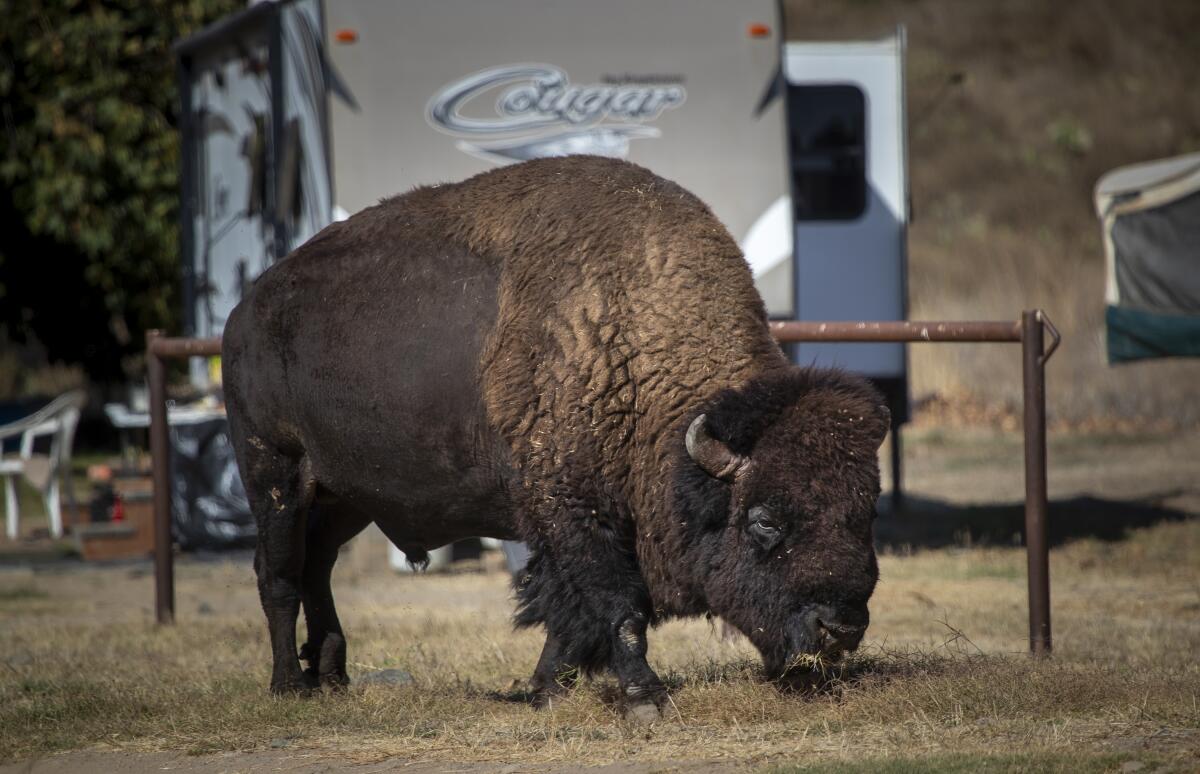
Catalina, the closest of the Channel Islands to the mainland, measures about 22 miles long and 8 miles at its widest point. Most people visit Avalon, a beach town with vintage hotels, taffy and souvenir shops, and a day beach club with cabana service. Outside the city’s hilltop gates, roughly 88% of the island remains undeveloped and managed as a nature preserve.
You can’t rent a car, and there’s no Uber or Lyft. The wide dirt roads and the narrow TCT, as it’s called, lead to quiet coves, rocky cliffs and a landscape that will remind you of faraway places. For me, it was a respite from the pandemic, if only for a night.
And on the 12-mile boat ride from Oxnard, you might see dolphins
The island was once the realm of “otter hunters, smugglers, and ranching, mining and military operations,” according to one historical account. In the 1920s, it was owned by William Wrigley Jr., of Wrigley chewing gum fame, who developed Avalon. Exploring the island’s less inhabited side gives you an idea of what this land looked like when the Gabrielino-Tongva tribe lived here 8,000 years ago.
During my early August trip, temperatures were mild as I walked the hilly routes inland before arriving at the west coast. The TCT, impossibly steep in places, serves up views of the mainland and the Santa Monica Mountains on one side, the Pacific on the other.
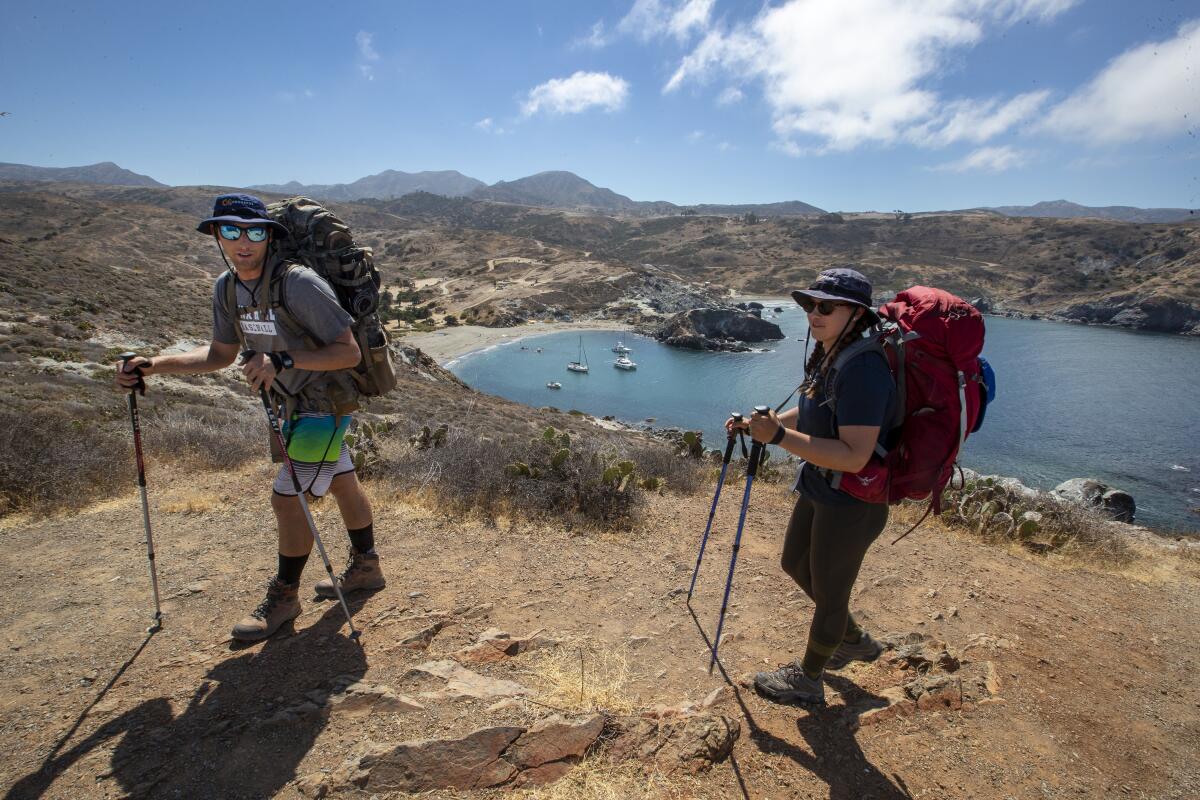
The TCT takes about four days to complete, depending on how much time you want to spend. Backpackers can stay at four campgrounds along the way, each with bathrooms and running water.
It’s up to you to decide how much you want to carry on your back on the trail, which gains or drops about 9,000 feet along the exposed course. Late fall and early spring are good times to go to beat the heat — and the crowds. You must make reservations for each campground before your trip.
“It’s incredible,” said Jasper Wood of Highland Park, who was backpacking the entire trail from west to east with his wife, Christine. “I can’t believe it’s taken me 20 years to come across the 29 miles to Catalina.”
The next day I ran into the Gross family and friends from Maryland’s eastern shore. The group of eight was supposed to be hiking in Norway this summer. When that fell through, a friend invited them to Avalon and suggested the trail. It got raves when I asked how they liked it. “It’s beautiful; the color of the water is my favorite thing,” one person said.
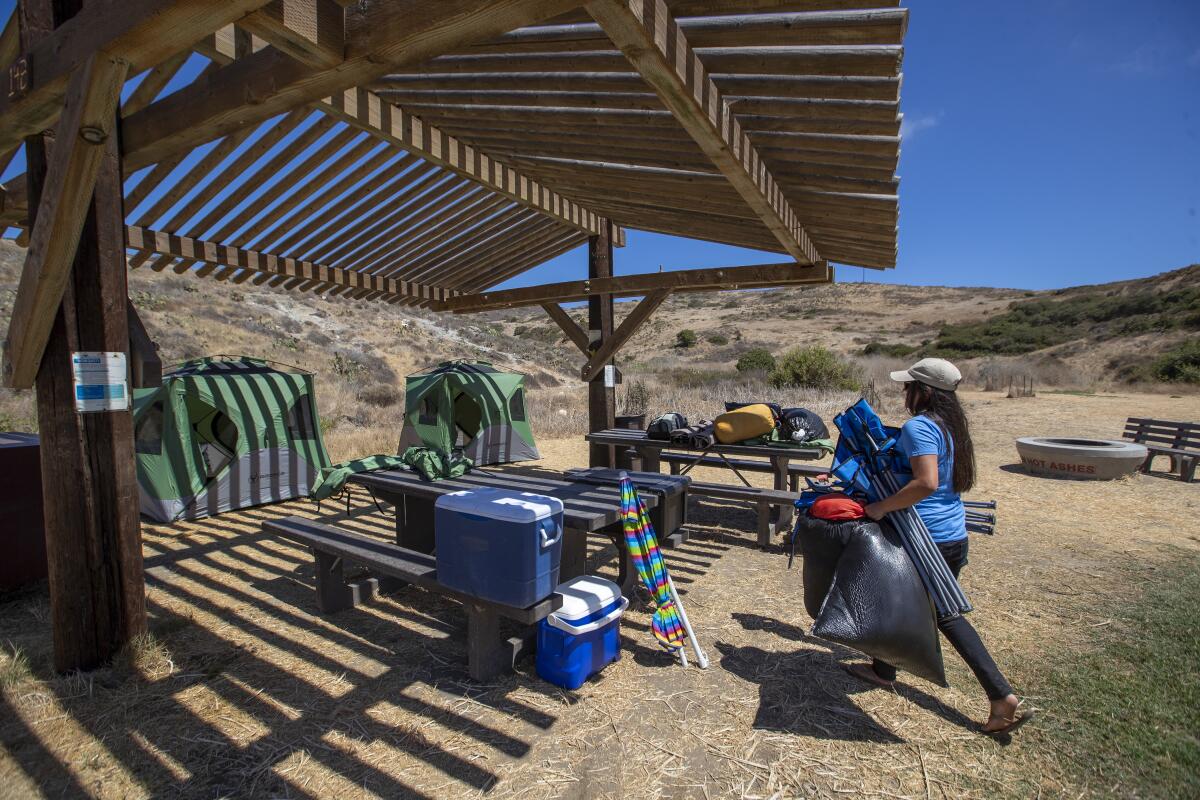
I wanted the backcountry experience, but I also wanted it to be easy. The answer was Catalina Backcountry, a camping outfitter and gear-hauling company that will take you just about anywhere you want to go in the outback — for a price.
I met Backcountry co-owner Larina Cassidy in Avalon to begin the adventure. She would haul my gear 16 miles on dirt roads to Little Harbor Campground, where I had a reservation. She would set up a tent, sleeping bag, stove, chairs, utensils, kitchen items and more. I handed off my food too, which she put in a cooler to bring along. All I had to do was carry a day pack and get myself to Little Harbor on foot, a hike of about 12 miles. “Stick to the narrow tracks to stay on the TCT,” Cassidy advised.
Cassidy dropped me off at Mile 9 on the trail. I carried a map but within the first half-hour missed a turnoff at the Upper Cape Reservoir and wound up on a wide fire road. I thought about Cassidy’s advice and doubled back almost a mile. I passed through the empty Black Jack Campground and took a break at the tiny airport.
This portion of the hike wound through the interior of the island. After the bison encounter, I saw an island fox, which gazed at me before disappearing into the brush. From the airport, I made my way downhill toward the ocean. The water glistened, and the rocky cliffs jutting into the ocean looked like the paws of a huge animal. I loved everything about this moment.
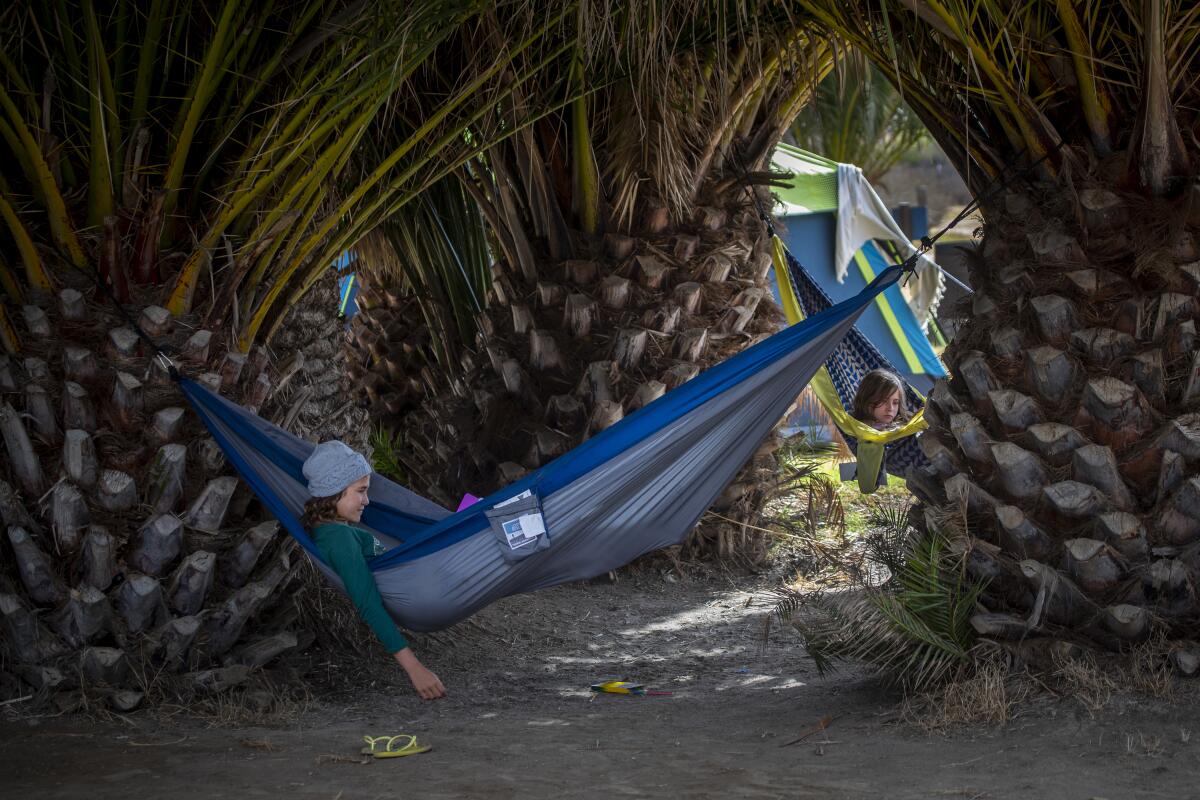
I dropped down into Little Harbor and found my temporary home: a tent tall enough to stand in, a cot with amenities on the pillow (including a snap light strip and hand warmers), chairs around the fire pit and firewood, a two-burner stove and all the utensils I would need to make meals.
I looked across the way and saw a lone bison standing in a neighboring campsite. Would I never escape these beasts? I left him alone, keeping an eye open to make sure he didn’t get any closer. (Hikers are warned to stay at least 125 feet away.)
The next day, I had a leisurely breakfast and felt guilty leaving my dirty dishes for Cassidy to pack up with the rest of my gear. I rejoined the TCT for the six-mile hike to Two Harbors, passing through some of the most beautiful landscapes along the route.
A thick layer of fog swirled around me when I reached a high point, and the path dropped to the other side of the island. Again, I had found a quiet place that felt safe and apart from others — without giving up wild beauty.
I arrived in Two Harbors, where Cassidy met me for the drive to Avalon to catch my boat. My heart sank. Why hadn’t I stayed another night or two? Why was I rushing home? I vowed to return. And I would absolutely choose the wild side again.
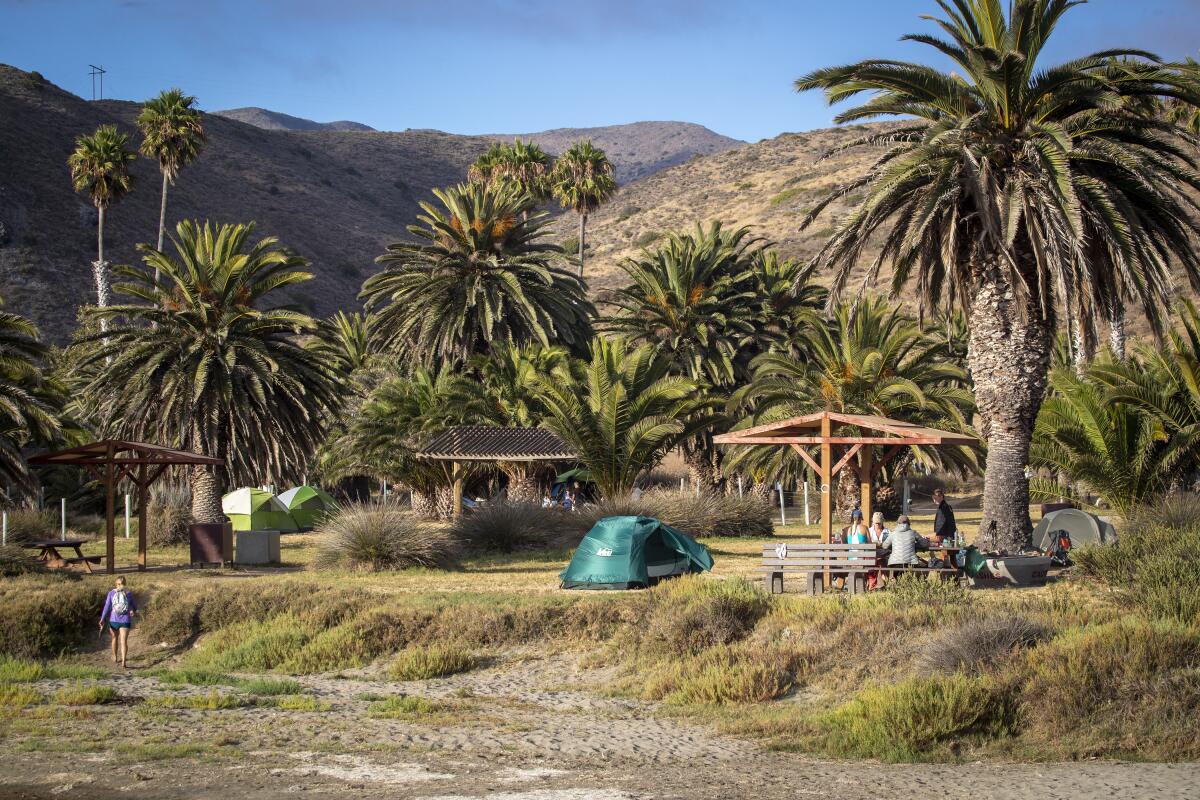
Campgrounds: The wild side of Catalina requires upfront planning. If you want to hike the Trans-Catalina Trail or stay at a single campground, go to ReserveAmerica to make reservations at Black Jack, Little Harbor, Two Harbors and/or Parsons Landing. The cost is $25 to $30 per night. If you become a member of the Catalina Island Conservancy ($35 and up), you get half off campground costs.
Hiking: The Trans-Catalina Trail is a great through-hike for those who want to spend four or five days enjoying the more natural side of Catalina. There are, however, many shorter and easier trails to explore too. The conservancy’s website lays it all out for you.
Gear hauls/camp set-up: Catalina Backcountry can take you and your gear pretty much anywhere you want to go, but it’ll cost you. For example, the Basic Camper setup for two nights at Little Harbor (with tent, sleeping bags, stove, utensils and more provided) costs $200 to $350 per person. You first need to book your campsite. Also available for custom trips.
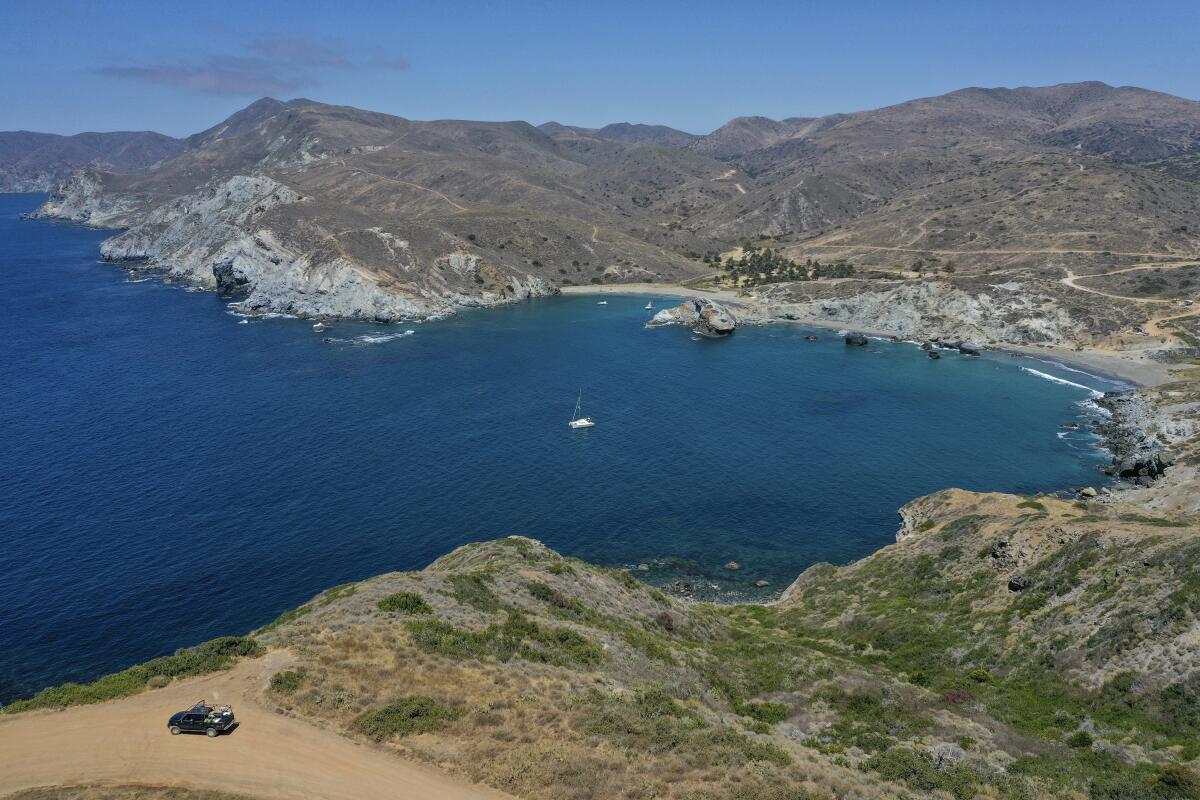
Transportation: Your gear hauler or taxi service will take you to the back side of the island. The Wildlands Express Service shuttle runs at limited times between Avalon and the airport ($17 one way) and Little Harbor ($34, one way) because of the pandemic. You must book ahead.
Boat ride: Catalina Express provides rides to Avalon from San Pedro, downtown Long Beach and Dana Point ($37.25-$38.25, adults, each way) that take up to an hour and a half. They sail at reduced capacity to comply with pandemic rules. I felt comfortable on the boat because there was room to spread out. Masks are required at all times onboard. The only time I was uncomfortable was when we lined up to board; people seemed to forget the six-foot rule and bunched up. Parking at the San Pedro site costs $19 for a 24-hour period.
Sign up for The Wild
We’ll help you find the best places to hike, bike and run, as well as the perfect silent spots for meditation and yoga.
You may occasionally receive promotional content from the Los Angeles Times.